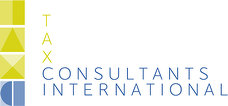Corporate Tax Services VAT advice & compliance Company Formation Services Accounting & Corporate Secretarial Services Payroll & HR services Corporate compliance Transfer Pricing Services Corporate Structuring Transfer Pricing Mergers & Acquisitions International labor and cross border assignments Payroll & HR International accounting VAT Tax compliance
Dutch-based companies benefit from a 9% effective corporate tax rate for income from qualifying R&D activities.
The innovation box stimulates innovative research and development by Dutch entrepreneurs with an effective corporate tax rate for qualifying R&D profits in the innovation box of 9% (2023).
Conditions to be met
Patented intangible assets and intangible assets created by the taxpayer and for which an R&D statement ('WBSO verklaring') is obtained may qualify for the Innovation Box, including in-house developed technological innovations. Marketing intangibles such as trademarks and logos do not qualify for the Innovation Box.
For the entry conditions of the innovation box, a distinction must be made between small and large taxpayers.
The R&D statement is sufficient for small taxpayers to enter the innovation box and may include unprotected IP in the Innovation Box regime. Larger taxpayers need an R&D statement and an acknowledged "legal ticket" to enter.
For qualifying small taxpayers, the following conditions apply:
- Subject to Dutch corporate income tax and
- The taxpayer produces an intangible asset itself, and
- It has received a so-called R&D statement
For qualifying large taxpayers, the following additional condition applies:
- It has a so-called “legal ticket” for the self-produced intangible asset.
Qualifying activities for large taxpayers (legal ticket)
There is a legal ticket in the event of (an application for);
- a patent,
- breeder's right,
- biological plant protection products,
- biocides,
- software,
- a registered utility model or a license for the marketing of a drug,
- or an exclusive license to any of the aforementioned legal tickets.
Small versus large taxpayers
For the application of the innovation box, a tax taxpayer qualifies as "small" if it meets the following two conditions:
- The gross benefit of all your intangible assets is less than € 37.5 million in the fiscal year for which you wish to use the innovation box plus the four (4) preceding fiscal years. The sum of the benefits generated from all intangible assets and the costs incurred from (the production of) this intangible asset is considered the gross benefit.
- The net turnover of the taxpayer (or the turnover of the qualifying group to which the taxpayer belongs) in the financial year in which the taxpayer wants to use the innovation box plus the previous financial years is no more than € 250 million.
The box threshold
The benefits generated by innovation or technology can only enter the innovation box if they exceed the threshold of the total production costs of those assets, also known as the so-called box threshold.
Such benefits can include royalties, sales profits, or (part of) the proceeds of a product. Benefits allocated to the innovation box can be reduced if (part of) the R&D activities are not carried out by the taxpayer but, for instance, by a party affiliated with the taxpayer.
Production costs are the manufacturing costs of the innovation or technology (consumed materials, labor costs, prototypes, test costs, etc.).
The production costs can at first be deducted against the standard corporate tax rate but will then have to be recouped against the tax rate as well before the lower rate of the innovation box regime can be applied.
The cost for fundamental research does not qualify as production costs.
The threshold is the sum of (A) the balance of production costs to be recouped and (B) the production costs in the financial year. That must be increased with the innovation losses that have not yet been recouped.
The remaining amount (the balance of accrued production costs at the end of the fiscal year) is carried forward to the next fiscal year if the qualifying R&D benefits in the fiscal year are less than the reimbursable production costs. (Only) Qualifying R & D benefits exceeding the production costs to be recouped in the financial year (the threshold) are subject to (the effective) levy of 9%.
The balance of the production costs is to be recouped at the end of the tax year and will be confirmed by a Decree to be issued parallel to the corporate tax assessment for the year.
The opting-in mechanism
For every intangible asset that meets all the conditions, the taxpayer can choose annually to place it in the innovation box. A choice that can be made annually and which is an intangible asset.
An intangible asset still under development cannot (yet) be placed in the innovation box.
The choice for the innovation box must be made in the corporate income tax return of the first year the taxpayer wants to add the asset to the innovation box. The standard tax rate applies to the benefits from innovative activities in the years the asset is not transferred to the innovation box,
R & D Losses
Innovation losses do not fall under the lower effective rate of the innovation box but are deductible at the standard rate. The losses can be offset against taxable profits from the previous and future years.
Lumpsum for small benefits from R & D activities
The innovation box regime can only be applied to the benefits allocated to the result of the R&D activities. If the R&D activity is in use and embedded in the production or sales process of products or services of the company, filtering out the benefits that can be allocated to the R&D activity alone can be quite a challenge.
To accommodate parties with relatively small R & D activities, it is allowed to opt for a fixed percentage of the profit for applying the innovation box (lumpsum) so that the taxpayer does not have to calculate how much profit can be allocated to the R & D activities specifically.
The lumpsum is 25% of the profit before application of the innovation box and may be € 25,000 at most.
The lump sum can be applied in the year wherein the intangible asset is produced and in the following two years.
What can we do for you?
We regularly deal with Dutch and foreign companies who are considering applying for the Innovation Box Tax Regime and assist them with the assessment of the feasibility of this regime, the preparation and filing of the application for the Innovation Box Tax Regime, and provide support about the ongoing administration and reporting requirements about it.
If you are interested in our services, contact us via e-mail or at our office in Rotterdam at +31 (10) 2010466 or in Amsterdam at + 31 (20) 5709440.


.png)








